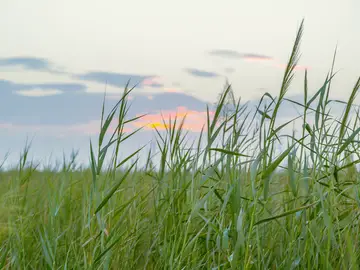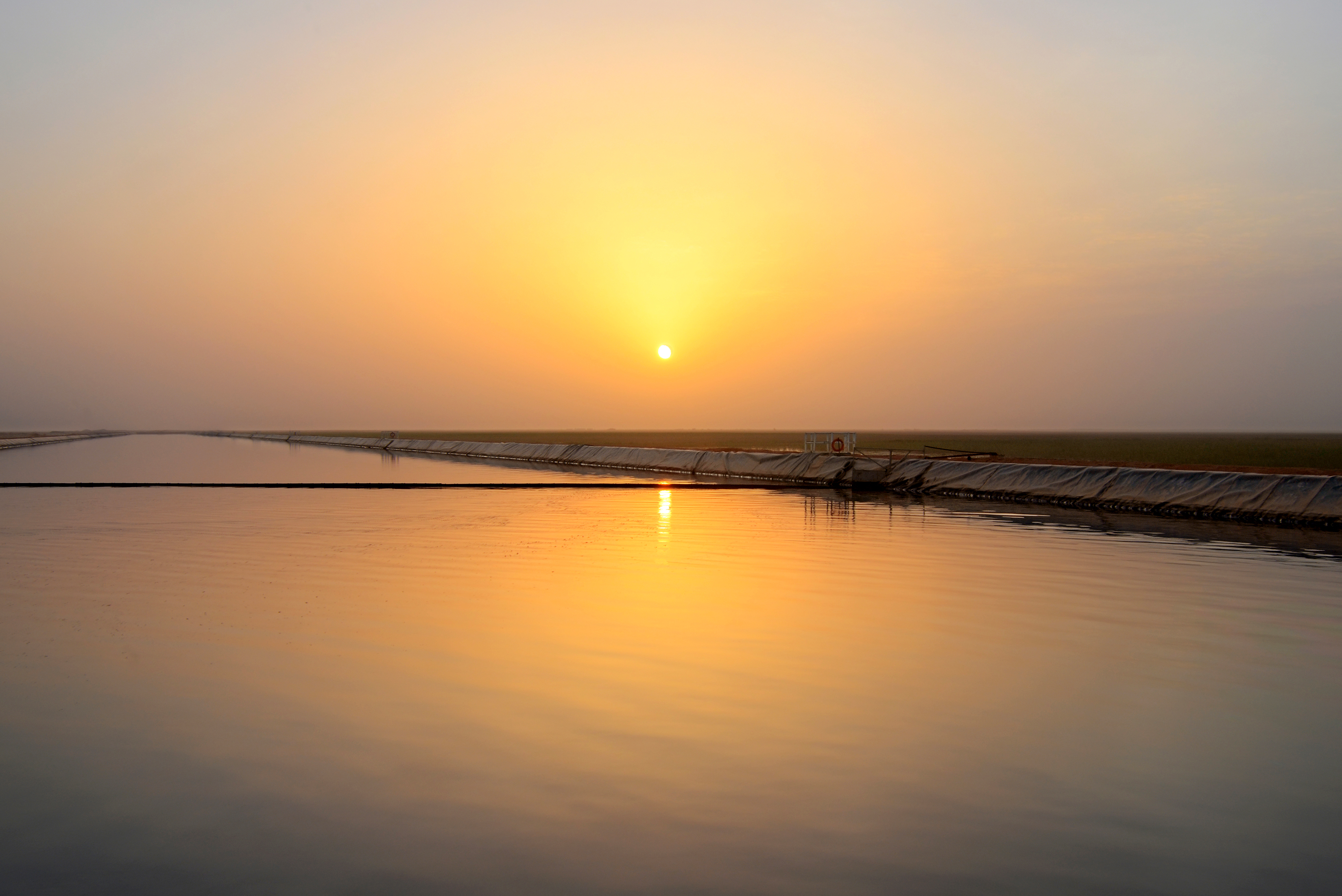Changed conditions – New solutions
Constructed wetlands provide natural habitats, enhance biodiversity, reduce greenhouse gas emissions, and create landscaping opportunities including the potential to bolster defenses against wildfires. Our nature-based solutions reliably treat any type of wastewater in a purely biological way. And are also available in different designs. From small to large. Suitable for all locations. Depending on the project requirements we employ various wetland technologies individually or in flexible combination. So, we provide optimized and customized nature-based solutions for all locations.
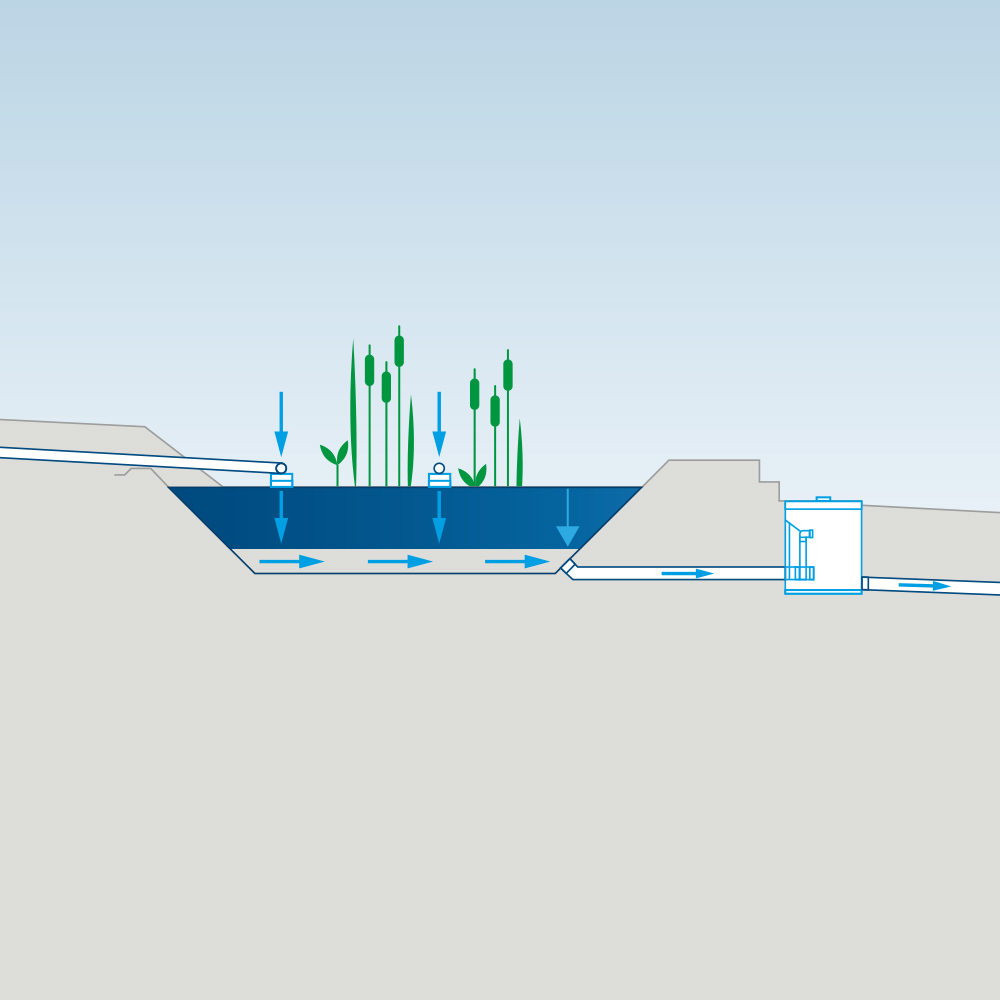
Vertical flow
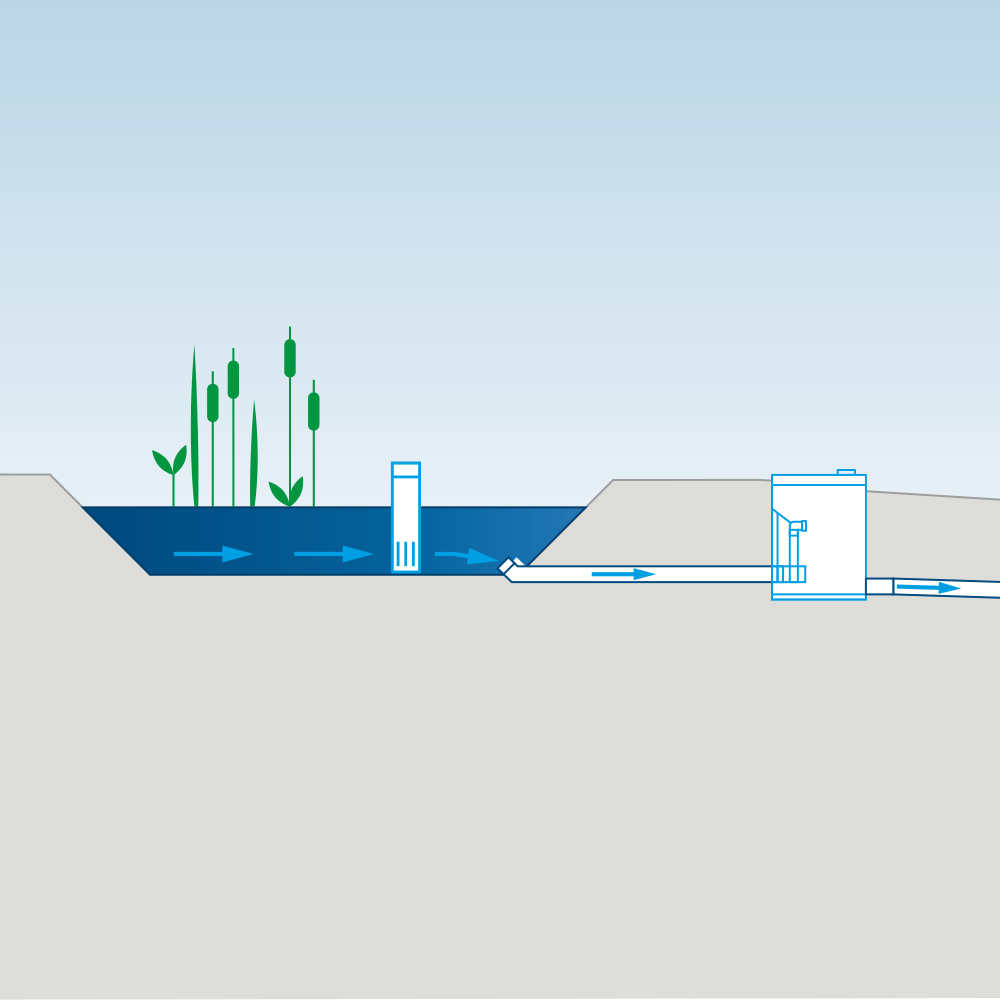
Horizontal flow

Surface flow
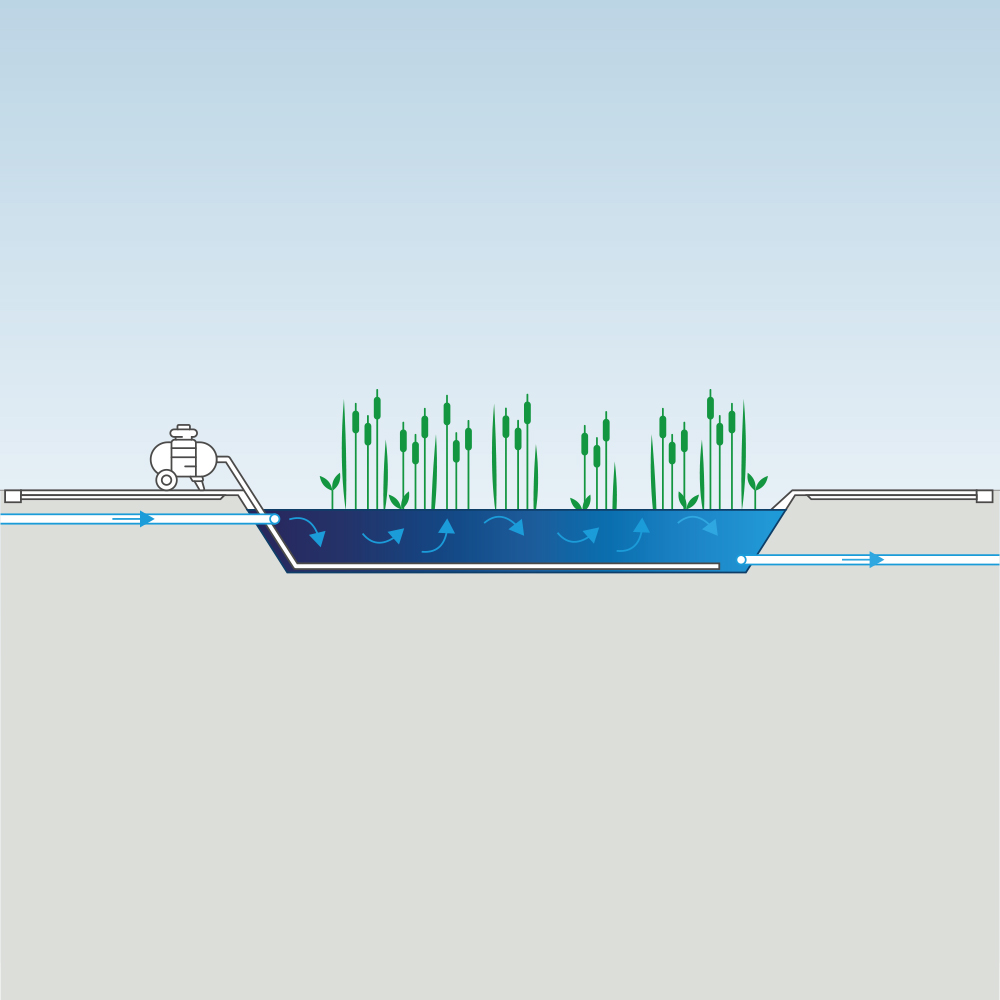
Aerated wetlands
Natural firebreaks
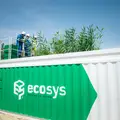
ReedBox®
FAQ – your questions, our answers
Yes, a large number of wetland plant species are native in the region including phragmites australis widely used in constructed wetlands. Wherever brackish or freshwater saturates the soil or is appearing at the surface (wadis, oasis, sewage and irrigation water spills), wetland plants will grow naturally and provide habitat for small native birds and other fauna.
Depending on the land availability and treatment intensification the total area is ranged between 2 and 5 m² per person. This area can be integrated into the landscaping and can have any shape. Small and large-scale wetland projects can be developed – it all depends on client requirements.
Constructed wetlands are robust, self-sustaining systems that typically operate efficiently for more than 20 years with minimal maintenance. Wetland plants work in synergy with naturally occurring microorganisms to break down sewage solids into stable mineral forms, eliminating mechanical wear on the system.
Mosquitoes have a larval stage, which lives in water. Compared to wastewater lagoons, constructed wetlands do not have stagnant open water areas, and thus mosquitoes are unable to breed. Other insects (e.g. flies) are reduced by the high biodiversity of the system.
Depending on the size of the system a weekly visual inspection of pipes, pumps and general conditions, and switching of valves is all that is required. If desired, sensors can be installed and connected to a central control centre for remote monitoring.
Rodents do not find any food in the pre-treated or macerated sewage which is loaded into the constructed wetlands. Therefore, rodents are not attracted to the wetland for food. Because the filter bed is temporary charged with water from time to time, and there is always water level close to the surface rats, mice or rabbits cannot burrow in the wetland sub-soil.
No, it is important to have a minimum inflow of water during the plants establishment to prevent the young plants from dying in the first half year. Once the wetland plants are established and have developed their rootzone they will survive short to medium term periods without inflow. A longer period without sewage inflow (3 – 4 month) will lead to a hibernation of the reeds; the above ground biomass will dry off, but the below ground stems will immediately sprout new shoots when water becomes available again.
That depends on the design and application. Some of the offered constructed wetland systems make use of pre-treatment in form of a screen, anaerobic baffled reactors or sometimes an aerobic biological process (e.g. SBR, trickling filter, fixed bed reactor). Systems can also be charged with raw sewage which avoids sludge production.
If a wetland system with a pre-treatment in the form of sedimentation or septic tank is chosen, the accumulated sludge in the sedimentation stage can either be disposed off-site by tankers or converted into humus in a special sludge composting reed bed. The produced volume of sewage sludge, if any, depending on the chosen wetland system, is always less than in a conventional activated sludge system.
The treatment process in the upper layers is aerobic, which prevents the generation of bad smelling gases. The wastewater remains below the surface of the gravel media which minimises any odours. Oxygen is supplied by the Reeds through the spongy aerenchyma tissue. The foul sewage odour is only created by anaerobic processes and thus sewage smell is not a problem faced in constructed wetland sewage treatment systems.
The higher the better. In contrast to technical sewage treatment plants, wetland technology has its optimum performance in a hot climate as the physiology of Phragmites is tuned to photosynthesis operating at these temperatures and the activity of the biological processes in the rooted filter layers are at an optimum under the local climate conditions.
Water is not lost, as it is used to create greenery with the wetland plants. If the wetland is integrated into the landscaping its footprint substitutes area of the normal soft landscaping which would otherwise consume water for irrigation. Water is removed from the system by transpiration, a process by which the plant loses water through its stomata (breathing pores).
Are you starting a project?
Get in touch with us.
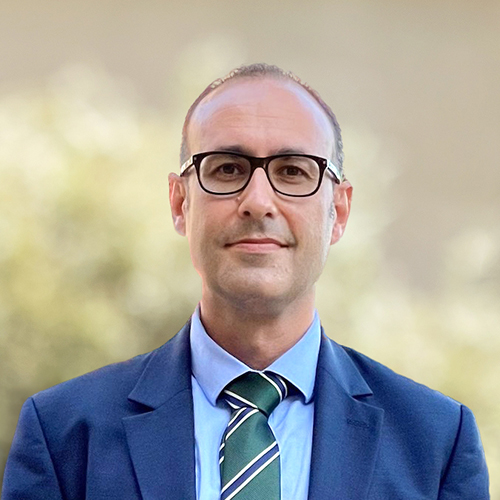
Ecosys® Wetland Ecosystems
BAUER-Straße 1
86529 Schrobenhausen, Germany
You might also be interested in...
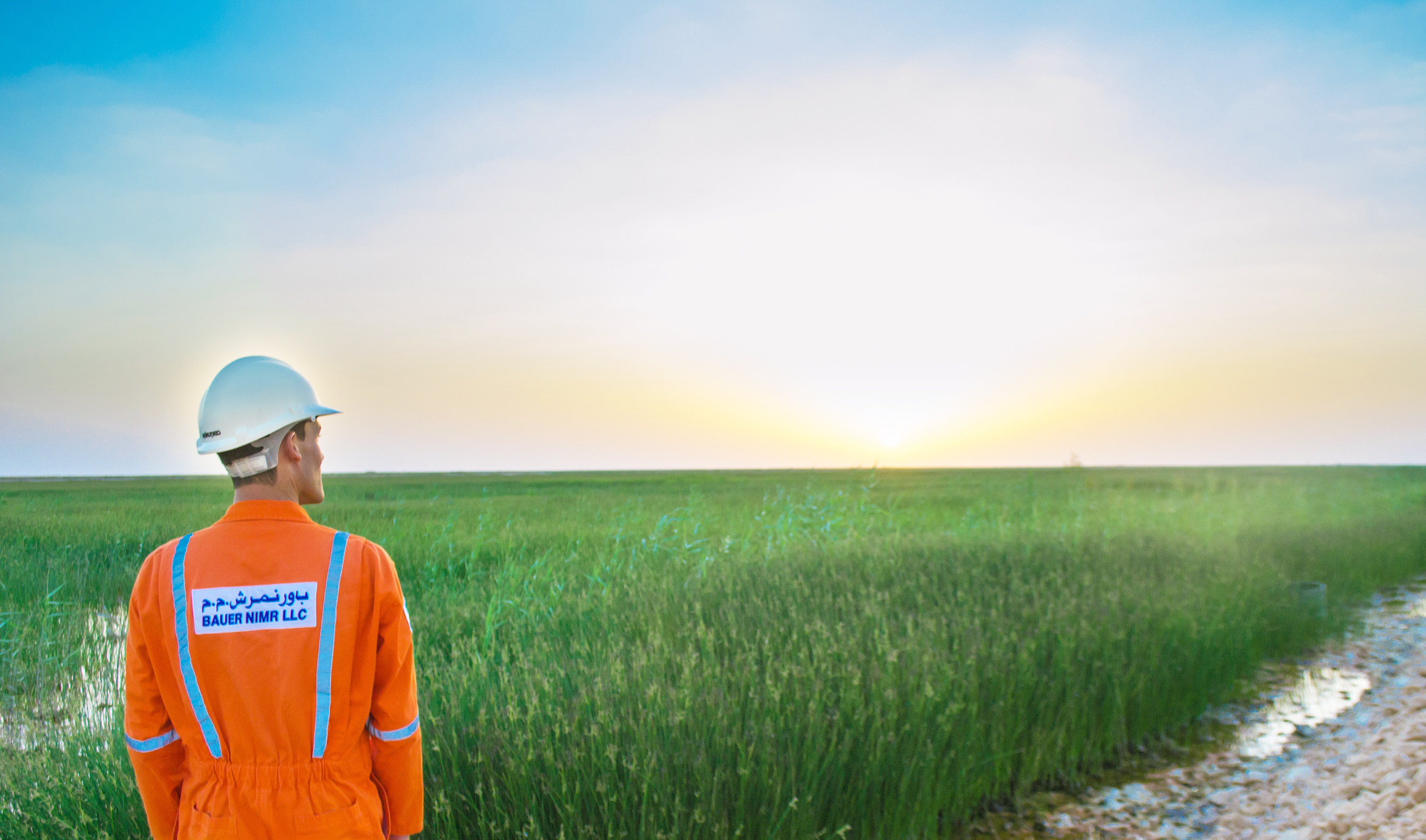
Ecosys® is a brand of BAUER Resources GmbH, which bundles the competences and know-how in the field of biological wastewater treatment by constructed wetlands.
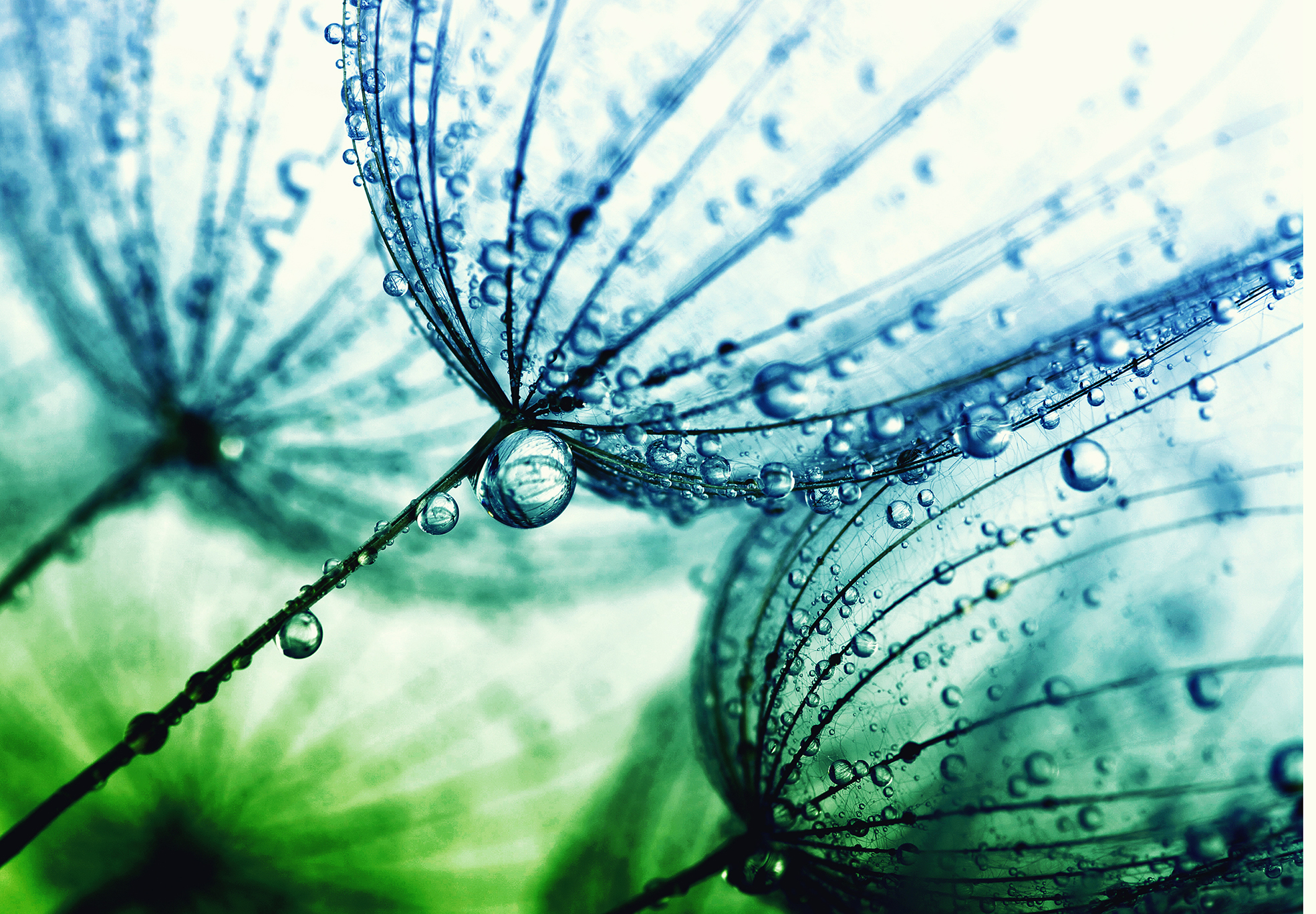
A constructed wetland is a nature-based wastewater treatment system, which removes pollutants by a number of simple and natural processes.
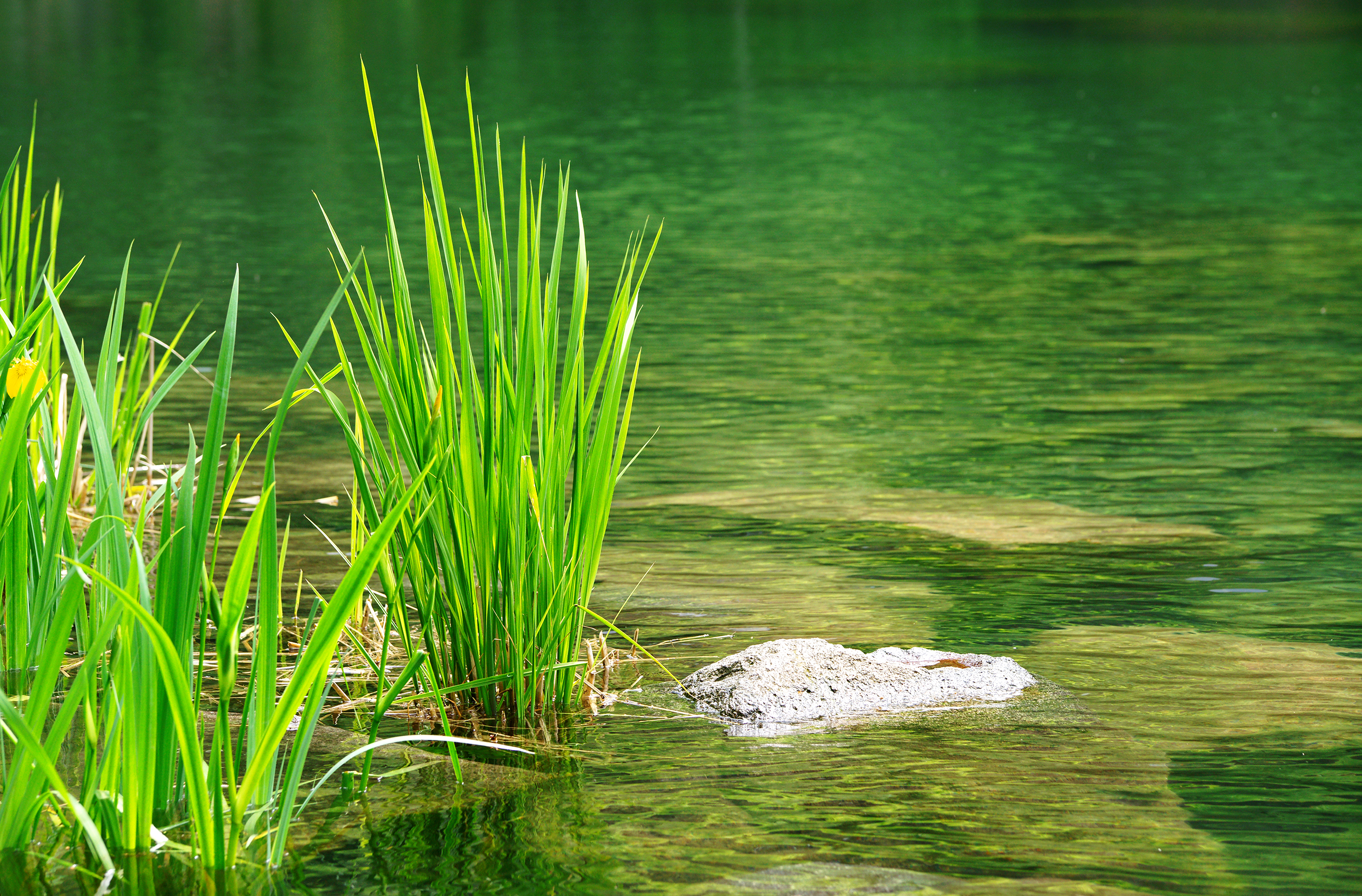
With our full financial backing and partnership, we would like to support you and your community by providing a constructed wetland.
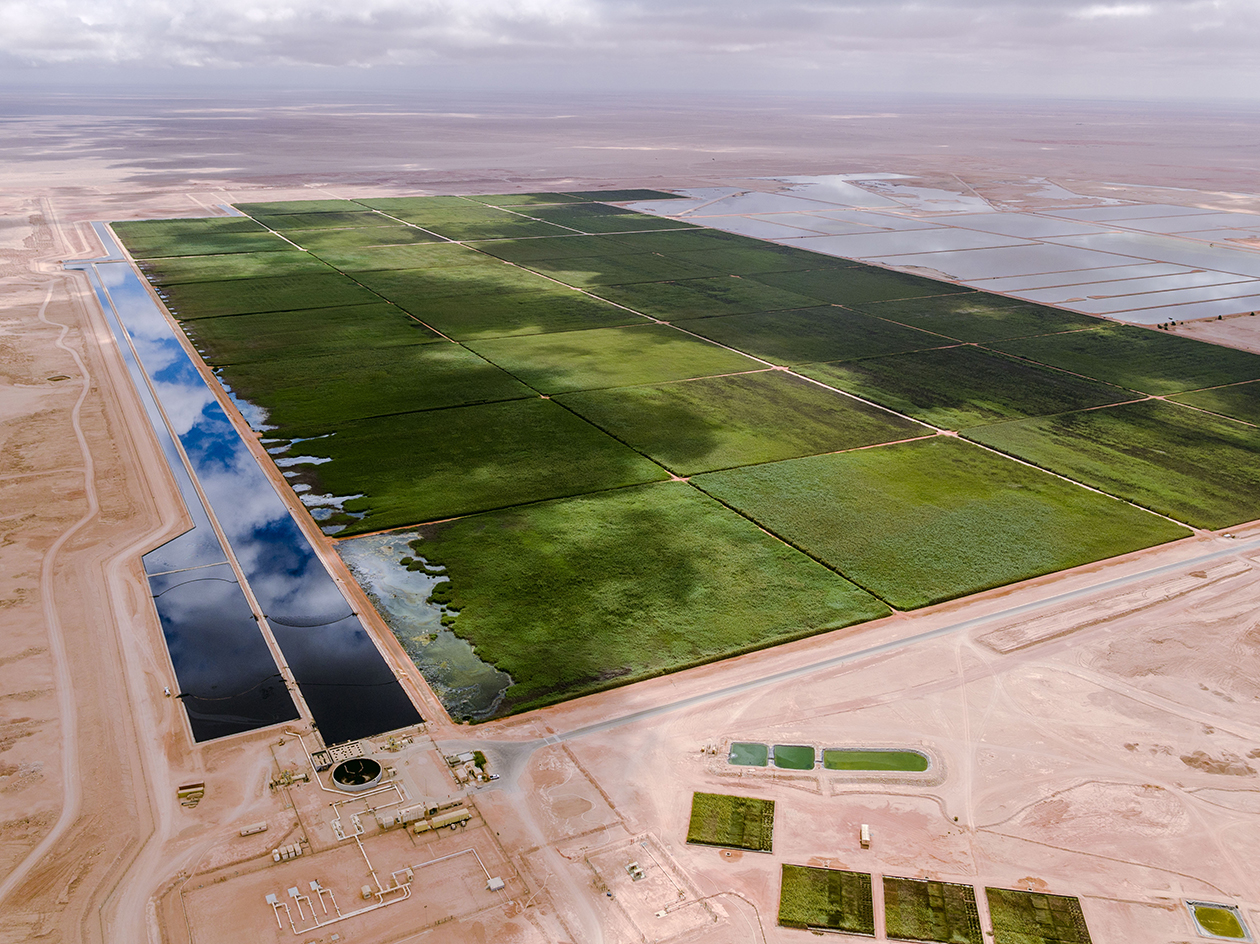
Our wastewater treatment plants are flexibly adaptable and already offer a sustainable solution for various regions of the world.
